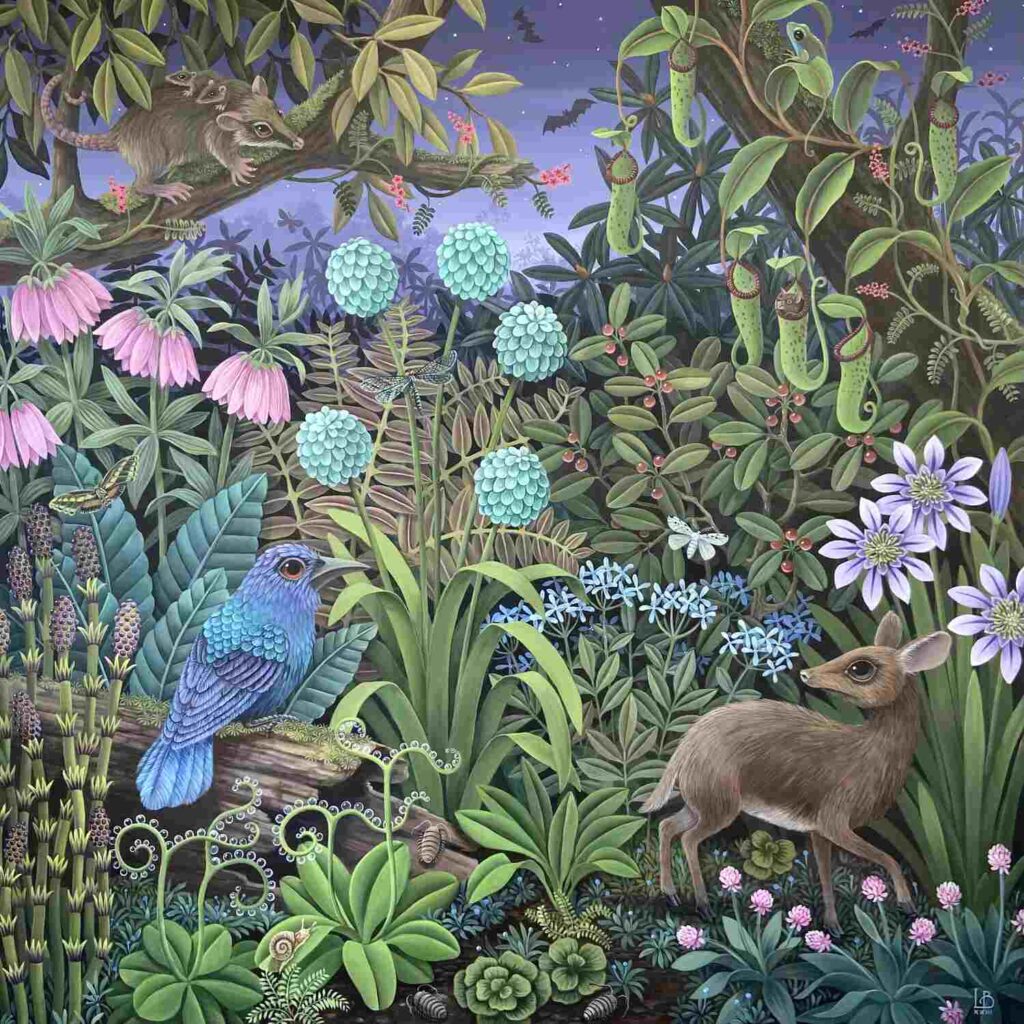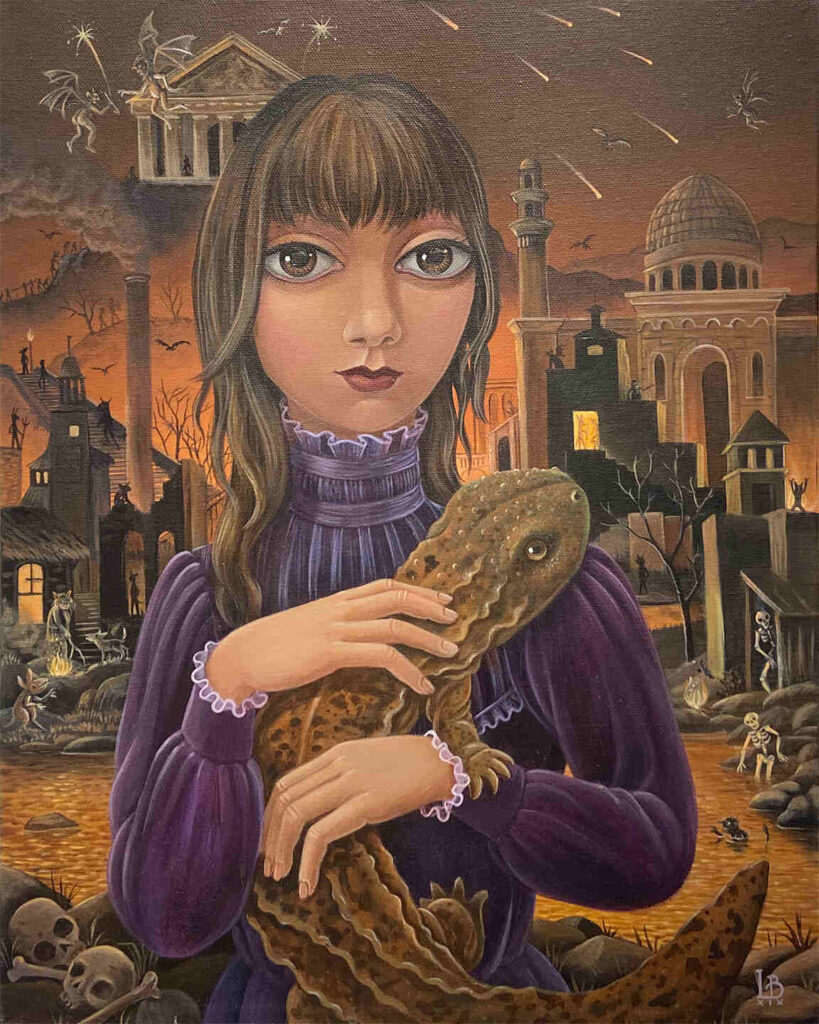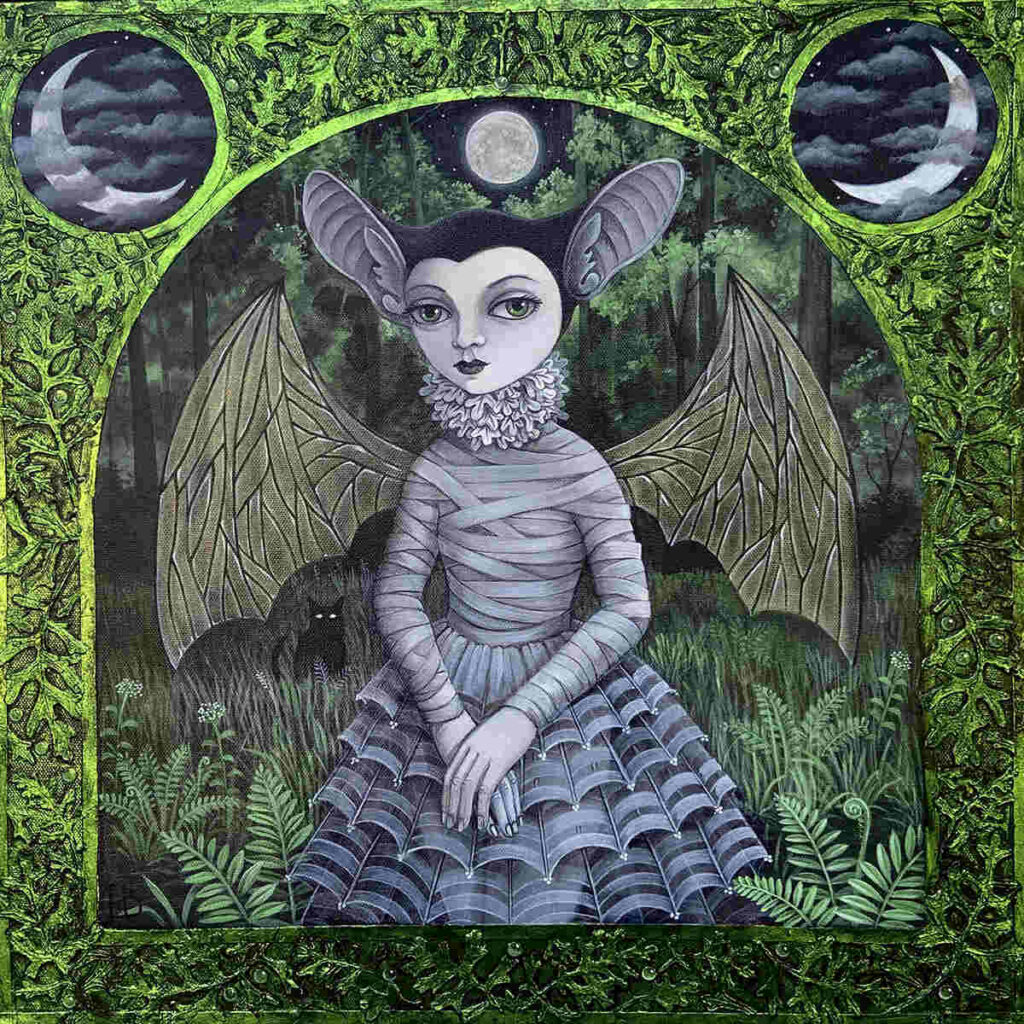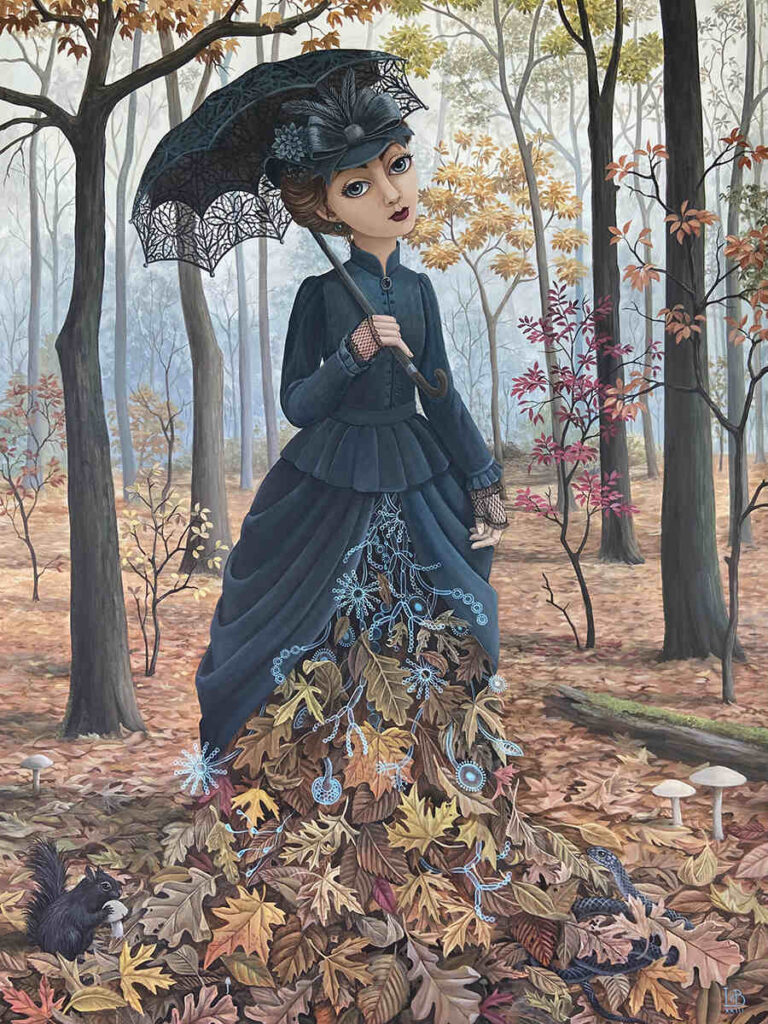Upon viewing the work of painter Laine Bachman, you cannot help but feel a sense of tranquility. Her work transports you to surreal realms filled with strange and wonderful creatures. Breathe in the sweet aroma of exotic flowers and plant life that blossom as far as the eye can see. Watch as creatures, both real and imaginary, enjoy each other’s company as they trade stories. And of course, there are the beautiful women who inhabit these surrealist plains. Some are completely human, while others take more mythological forms, but they all equally radiate divine feminine energy embodying the spirit of mother nature.
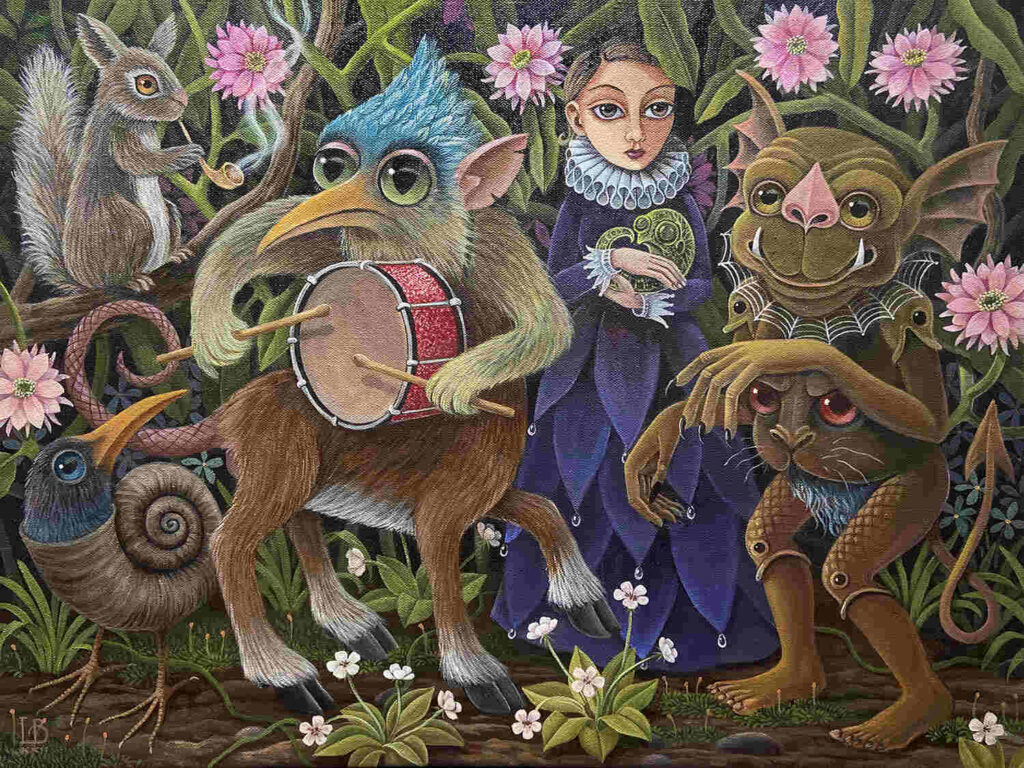
Laine Bachman is an American artist who currently resides in Columbus, Ohio. Growing up, Laine was an inquisitive child who, thanks to her mother’s love of gardening, found an avid passion for nature and plant life. In 1997, Laine graduated from Columbus College of Art and Design with a BFA degree in Painting. Originally, Laine’s body of work consisted of highly realistic still life scenes often using watercolour as her primary medium. However, her work has flourished into her current body of work where she now specialises in pop and magical surrealism. She utilises the style of pop surrealism to play with and combine real and imaginative worlds where she explores nature, plant life and wonderfully feminine energy. Laine has shown her work in various exhibitions across the United States and is currently represented by Bender Gallery.
The women in my paintings have a sense of stewardship, as though they are mother nature.
Exclusive Interview with Laine Bachman, prolific Pop Surreal and Magical Realism
artist, represented by Bender Gallery in Asheville, North Carolina.
Bender Gallery associate, Amanda Kendrick-Deemer, interviewed the Ohio based artist Laine Bachman. They talked about her current paintings, real and mythological creatures, and her studio routine.
How’s it going? It’s nice to meet you. Please tell me about your background, where did you
grow up, and were you interested in art as a kid?
I grew up in Middletown, Ohio, which is right between Dayton and Cincinnati. I was always
interested in art. I took many different art workshops as a kid and at the age of 14 I took up
watercolour which was my main media for years. I graduated with a BFA in Painting from
Columbus College of Art & Design in 1997 and about 16 years ago I started working with
acrylic. I had just had my daughter and worked with acrylic instead of oil paint to have a less
toxic environment.
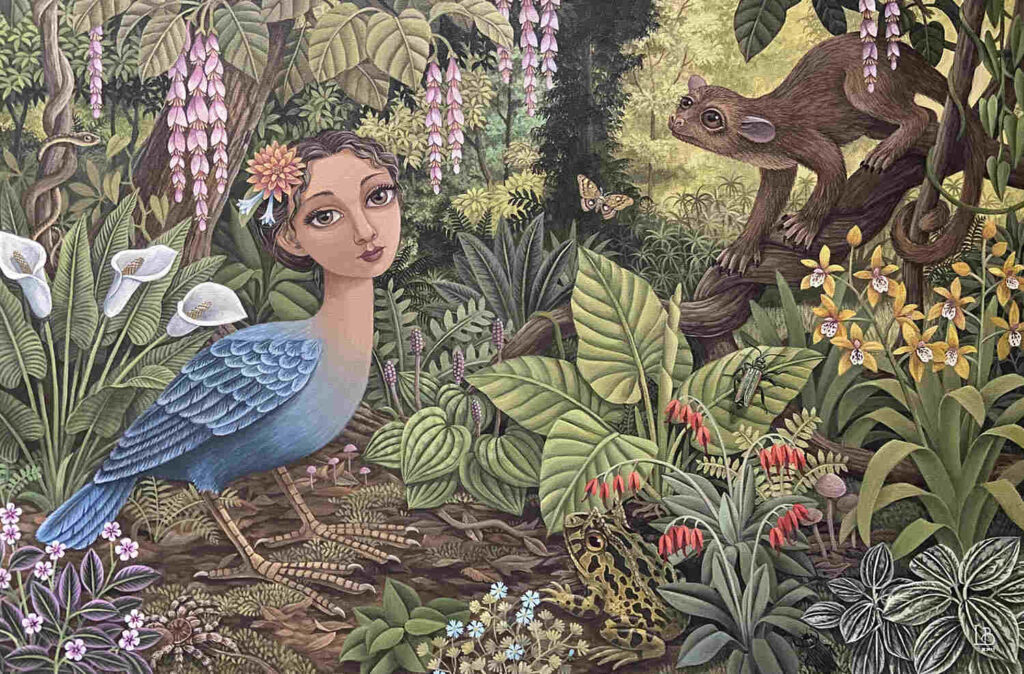
You paint so many different types of animals and insects, how much of your studio practice involves research? How do you get your ideas?
I love books. I collect field guides, and I love old encyclopedias. My whole life I have been
fascinated by the pictures and illustrations in those types of books. Just out of college I worked at a bead store, and I feel that is what brought on my sense of ornateness within my work. I did intricate beaded works for a time. As for the plants, I love gardening and I grew up witnessing my mother gardening daily. I make sure to visit botanical gardens and natural history museums whenever I’m traveling.
I’ve noticed that your paintings seem to take place all over the world, how do you decide
the geological setting of your paintings?
My paintings are worlds I create. Usually I pick a theme, ‘The Everglades’ for instance, and then run with it. Any animals or plants prevalent in that setting, are on the list of possible additions to the composition.
What does a typical day in the studio look like for you? Do you listen to music or podcasts?
It varies but I usually paint for 5-8 hours (or more) every day. I wake up, have my coffee, and
head to the studio. I listen to podcasts, usually true crime. I paint until it gets dark or when my daughter gets home.
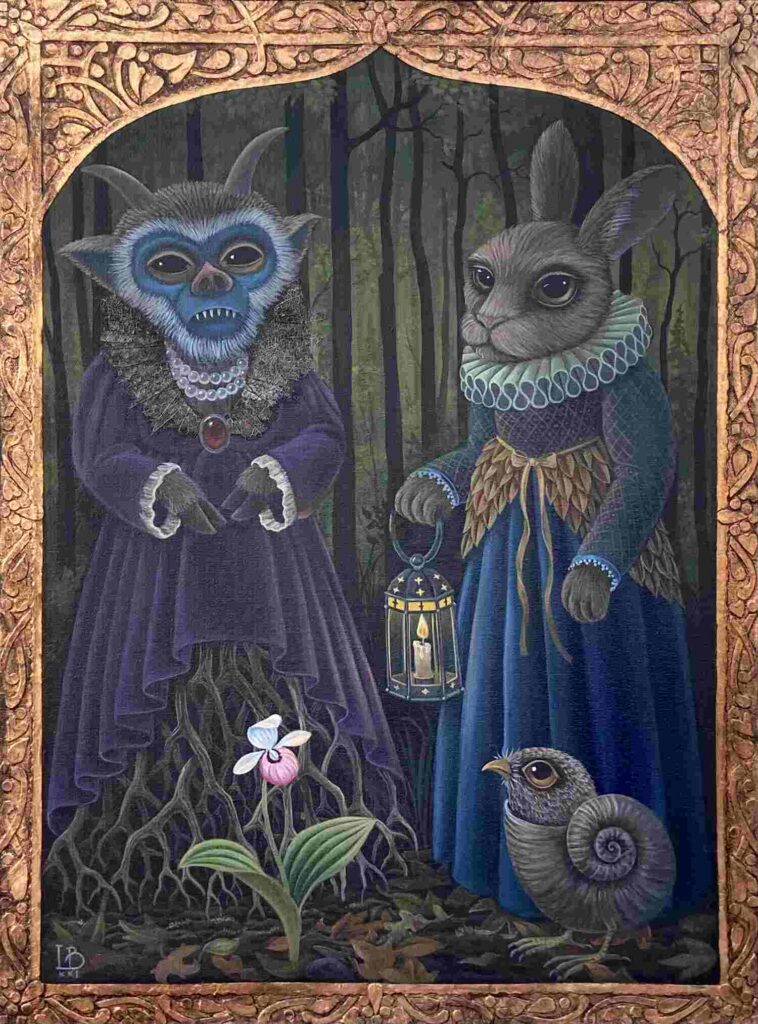

Do you keep a sketchbook? If so, what does it look like, are you making small, planned
drawings, taking notes, writing lists? How do you decide on your compositions?
Yes, it’s usually filled with words and rudimentary sketches. I have lists of what I’ll include in
the paintings I’m working on. When I want to add in a hybrid animal, I pull from my list to
decide what the combination will be. My sketchbook is usually messy and done all in pencil.
What are you working on right now? Can you tell me a little bit about your painting
process?
I work on five paintings at once. My favorite part is starting a painting. With my larger pieces, I have a hard time bringing them to completion. Usually, I need to sit with it for a bit, to decide on what the final touches should be.
Right now, I’m creating some paintings for the Canton Museum of Art in Ohio for a solo
exhibition in the summer of 2024. Some of them will be a part of my planet series and others will be landscapes with nebula backgrounds. I start my paintings with the background. The sky is so important. It dictates what will follow and the mood of the piece. I then start building forward, maybe with some trees and then continue filling the composition with plants, animals, insects, etc. I equate my painting process to building a garden.
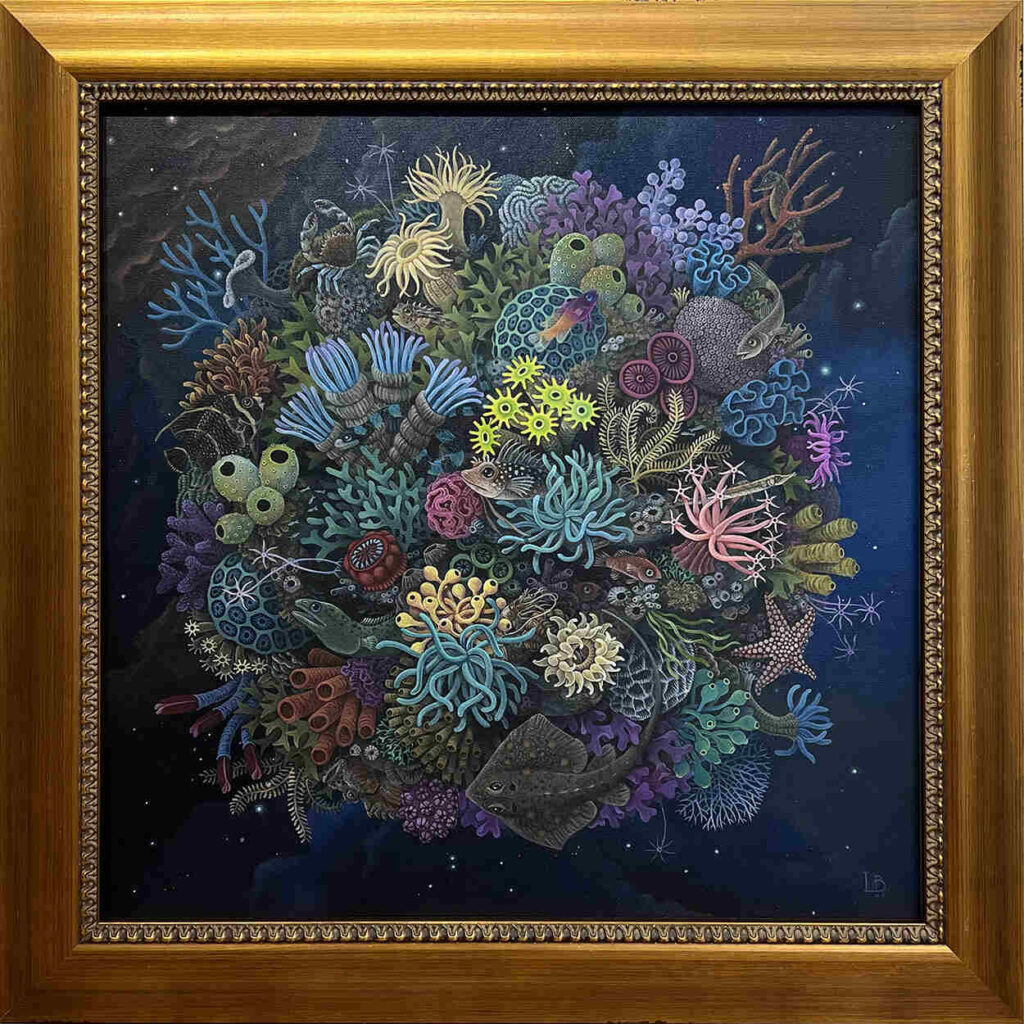
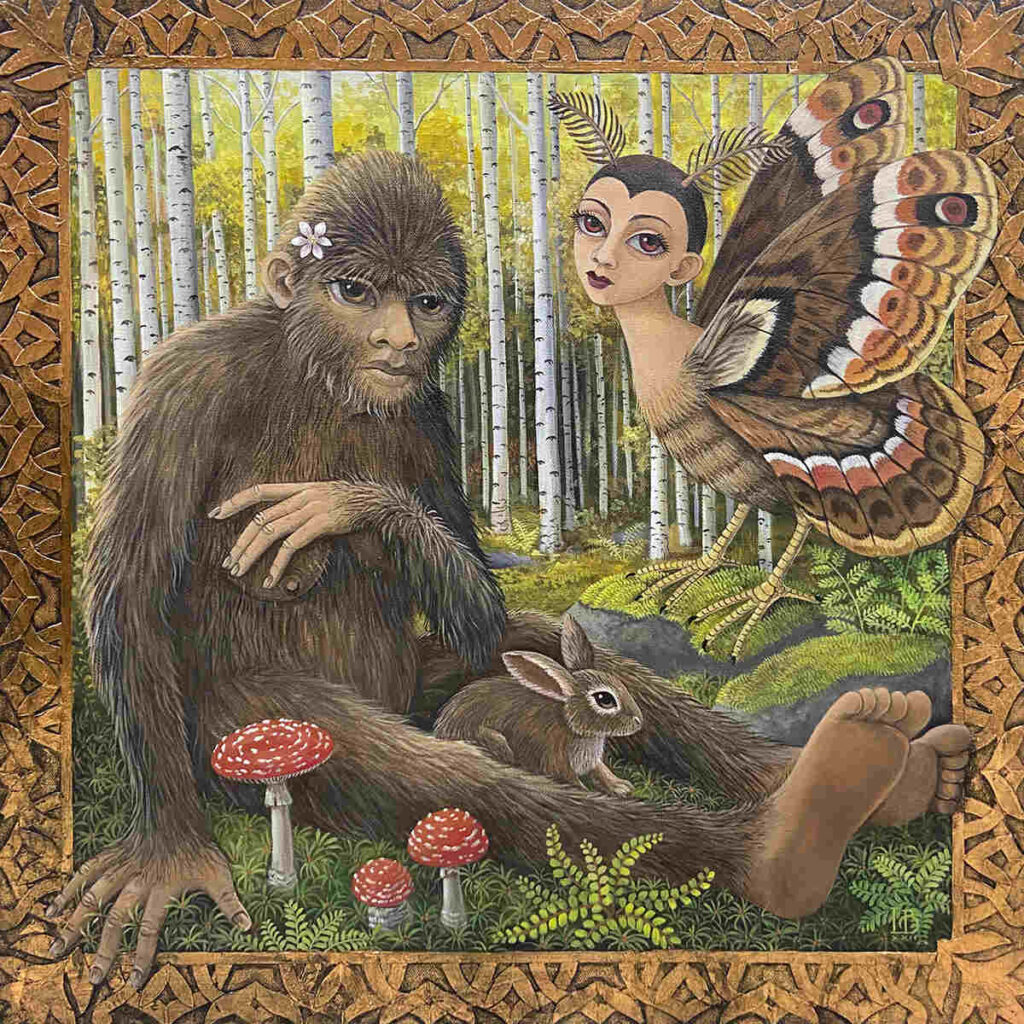
If you had to choose only one word that you feel best describes your work, what would it
be, and why?
Complex. I spend a lot of time creating layers within my pieces, connecting the environment
with the living things that are a part of it.
I equate my painting process to building a garden.
I want to know about your paintings like ‘Hell Bender’ and ‘It’s Just a Phase’. They are
clearly darker or moodier, how do you see these types of works in conjunction with a
mellower painting like ‘Orchid Oasis’? Are you actively thinking about how your audience
will perceive your work?
The subject matter for each new painting depends on my mood and the images I want to see. The hellbender salamander is an amphibian found in Ohio and some other states. It’s such a strange and unique animal, that some people may perceive it as made-up. So, although some of my works have mythological or hybrid creatures, there are mostly real places and animals. Because of this, there’s an undertone of conservation. I want my viewers to think more about nature and the environment than they did before looking at my work.
Tell me about your painting ‘It’s Just a Phase’.
I had done a watercolor painting of a bat girl a long time ago. I rediscovered it and decided to
rework it. I added the dragonfly wings because of the history and stories of fairies and wanted to bring that into this piece. The border is made up of dusty millers which are fuzzy plants I find in my garden. The green was used to explore the visuals of night vision. To see things that you normally wouldn’t, like the supernatural.
Let’s talk about fashion. Sometimes your women are wearing clothing from the early 20th
century, sometimes the 16th century, sometimes a different era. Where do you get your
inspiration?
I’m inspired by royal portraiture and Tudor art. Lace is a common element in those eras of
fashion that can be translated over to what one finds in nature. In ‘Night Orchid’, the lace ruff is dried tomatillo skins. I collect elements like that to add to a piece for a subtle touch of ornamentation.
Why the enlarged eyes? I’ve noticed that most of your girls have similar facial features. Is
that just to keep a consistency across the board in that aspect?
I’ve always been attracted to large eyes in the pop surrealism genre. In terms of the facial look of my figures, some viewers say they resemble me or my daughter, but it’s not a conscious thing. It’s just my style and how I’ve always drawn the women and girls in my pieces. The women in my paintings have a sense of stewardship, as though they are mother nature.
In ‘The Departure’, there are some glowing creatures floating over the leaves. Is this to show the connection of all wildlife and creatures?
In this painting, the woman is wearing a Victorian mourning outfit, signaling the end of autumn. The organisms hovering over the leaves are the ones that will eventually break down dead leaves. I don’t add things unless they make sense to me. Sometimes I put the impossible with nature to make it visible.
Lastly, talk to me about your titles. At what stage of making a piece do you decide on the
title?
It depends. An example would be with my three paintings, ‘Departure’, ‘Arrival’, and ‘En Root’. I made one, and then I decided to make a few more as a series about the journey of the seasons; really about transitions. The titles came along as I painted them. For ‘It’s Just a Phase’, I was thinking about my teenage daughter while titling it. And of course, the inclusion of three moon phases.
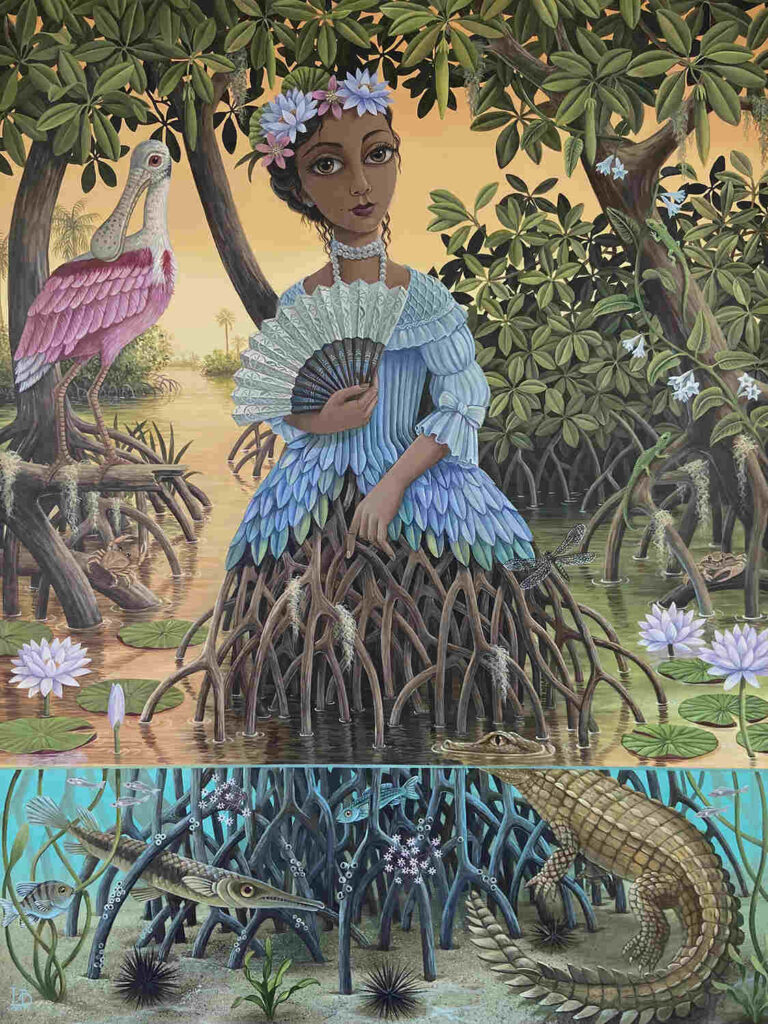
Check out Laine’s available work here: Bender Gallery!


